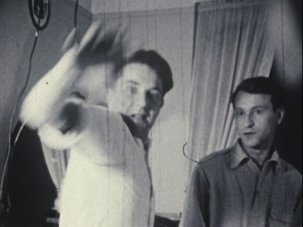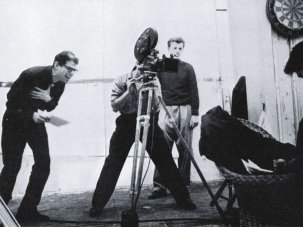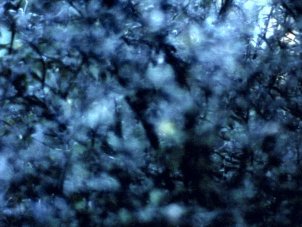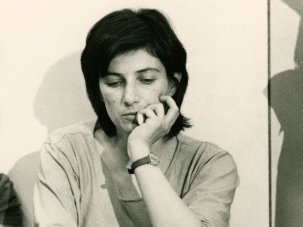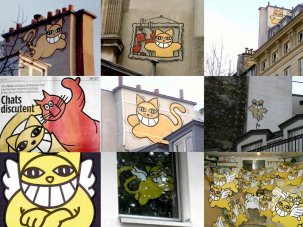Originally published as Film as life: Jonas Mekas at 90 in our January 2013 issue
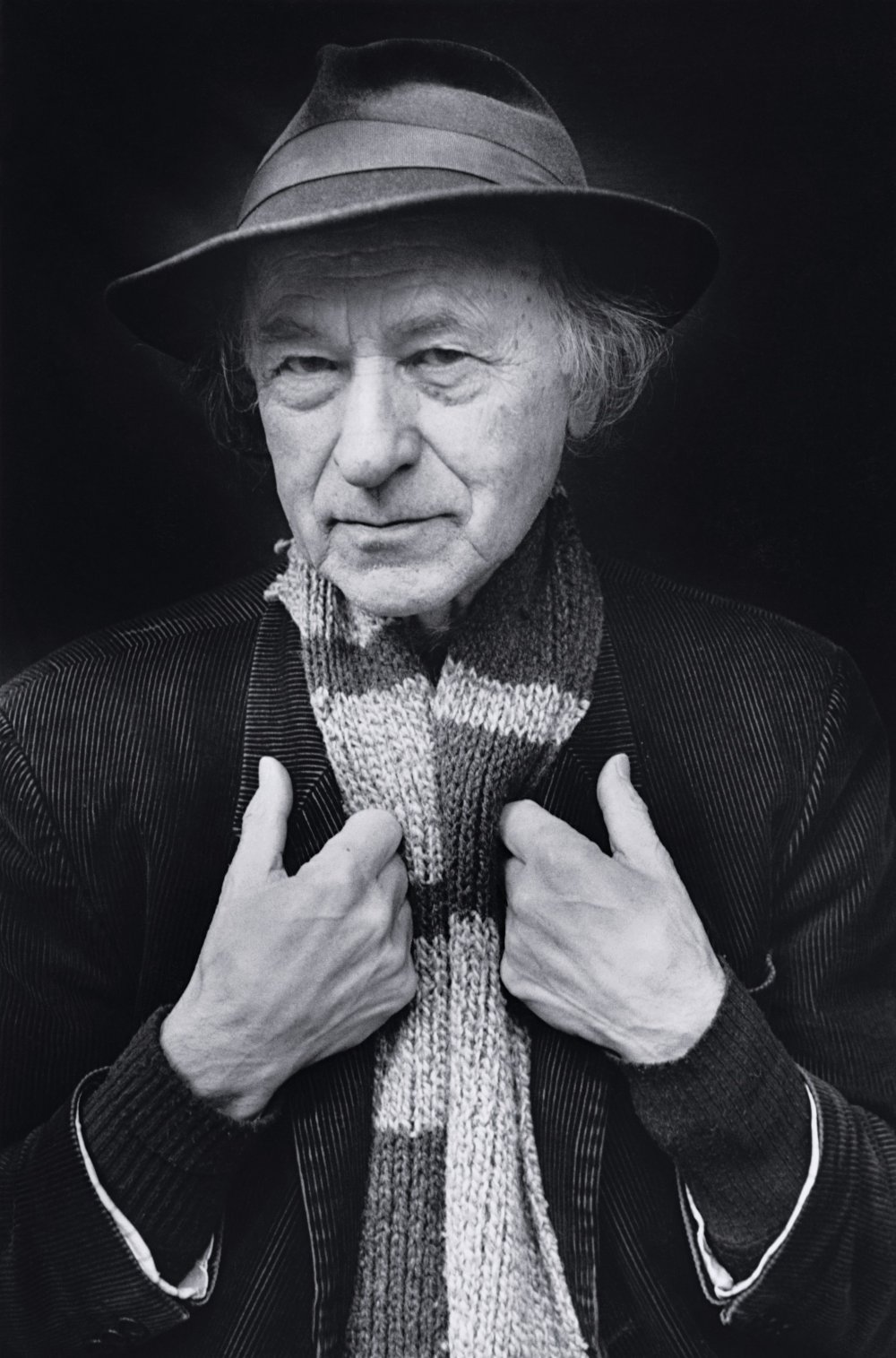
Jonas Mekas
Credit: Christopher Felver/Corbis
It is 24 December 1967 and I am standing in the lobby of the Film-Makers’ Cinematheque, located in the basement of an office building on 41st Street, just east of that tawdry treasure of New York City, the Times Square movie strip. More than 200 filmmakers, artists, writers, musicians and lay friends of Jonas Mekas have assembled to celebrate the 45th birthday of the godfather of avant-garde film (a designation not yet coined, but already appropriate). The party, financed with contributions from almost everyone present, has been organised by Barbara Rubin (the maker of the extraordinary Christmas on Earth, shot in 1963, when she was still in her teens, with a 16mm Bolex that Jonas had lent her), Barbara’s best friend Rosebud, and me. For the past week, Jonas has been the object of Barbara’s and my attention as we schlepped him from one tony Manhattan menswear store to another in search of the perfect suit to replace his ragged corduroy jacket and threadbare pants.
Many of Jonas Mekas’s films are published by agnès b. DVD and Re:Voir and are available to buy with his books from the BFI Store.
Walden and Lost Lost Lost are also available on Blu-ray from Re:Voir and from Kino Lorber in the US, and (alongside 11 more of Mekas’s films) to stream via subscription at dafilms.com.
Now he is furious that $45 worth of ice has been delivered to the party. Had we not stopped to think that $45 could pay for three rolls of 16mm film, enough for some filmmaker to realise an eight-minute movie? How could we have asked filmmakers to pay for such nonsense?
But there is worse to come. Faced with creating a birthday cake large enough to feed 200, we have opted to arrange the many small rectangular, square and circular layers we baked into a near life-size image of Jonas, frosted and detailed with vanilla and chocolate pastry crème and laid out on a long, parchment-covered table. It is not until we hand Jonas the knife to cut the first slice that I realise that we have made a totem, to be devoured by the community.
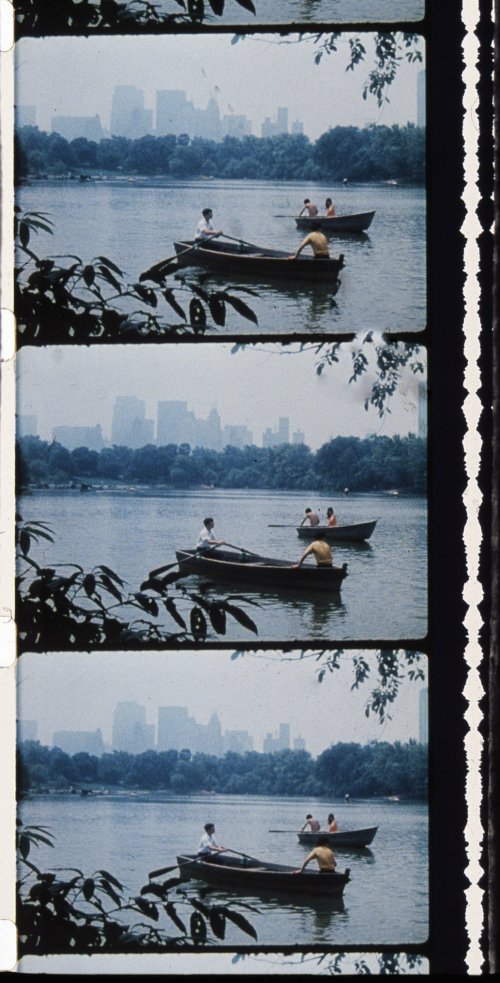
Walden (Diaries, Notes, and Sketches) (1969)
Jonas, a superb physical comedian, circles the figure, chuckling as he considers which piece of himself to sacrifice. Should it be the hand that holds his omnipresent Bolex, or one of the feet that carry him about the city that he documents daily and will make his own in his diarist masterpiece Walden (Diaries, Notes, and Sketches) (1969)? Or would it be better to get it over with quickly by piercing his Pillsbury pound-cake heart? Too cowardly to watch, I never knew where he placed the knife, but I remember that afterwards we laughed, ate cake, drank wine and were reasonably happy that Christmas Eve.
On Christmas Eve 2012, Jonas Mekas turned 90, double the age he was at that party, and his practice has shifted from mostly godfathering to largely art-making. He has become one of the most accomplished and prolific film and video makers of the movement he nurtured for half a century. Precariously poised between the ‘art’ film and the visual art world, this economically fragile, surprisingly varied moving-image genre has been dubbed, to no one’s satisfaction, the New American Cinema (forgive the chauvinism) or defined by attaching various modifiers – underground, avant-garde, experimental, personal – to the generic term ‘movies’.
Nothing could testify more conclusively to Mekas’s transformation – from the indispensable guardian, fundraiser, critic, proselytiser, programmer, archivist and founder (or co-founder) of the institutions that formed that movement’s infrastructure, to the maker of a body of moving-image work that is at least the equal of those created by the field’s legendary artists (Maya Deren, Stan Brakhage, Ken Jacobs, Michael Snow) – than the many exhibitions that have been organised to celebrate the beginning of his tenth decade on earth.
In London, at BFI Southbank, Mark Webber has programmed a series that includes many of Mekas’s major films, including the early more or less anomalous Guns of the Trees (1962) and The Brig (1964); the first and still the most complex of the diaristic works, Walden; the most haunting and emotive diaries Lost Lost Lost (1976) and Reminiscences of a Journey to Lithuania (1973); and a recent diary made on digital video, Sleepless Nights Stories (2011). Simultaneously, the Serpentine Gallery is exhibiting a selection of Mekas’s installation, photographic, film, video and sound works, along with a “live event”, discussions and the premiere of a new film, Out Takes from the Life of a Happy Man.
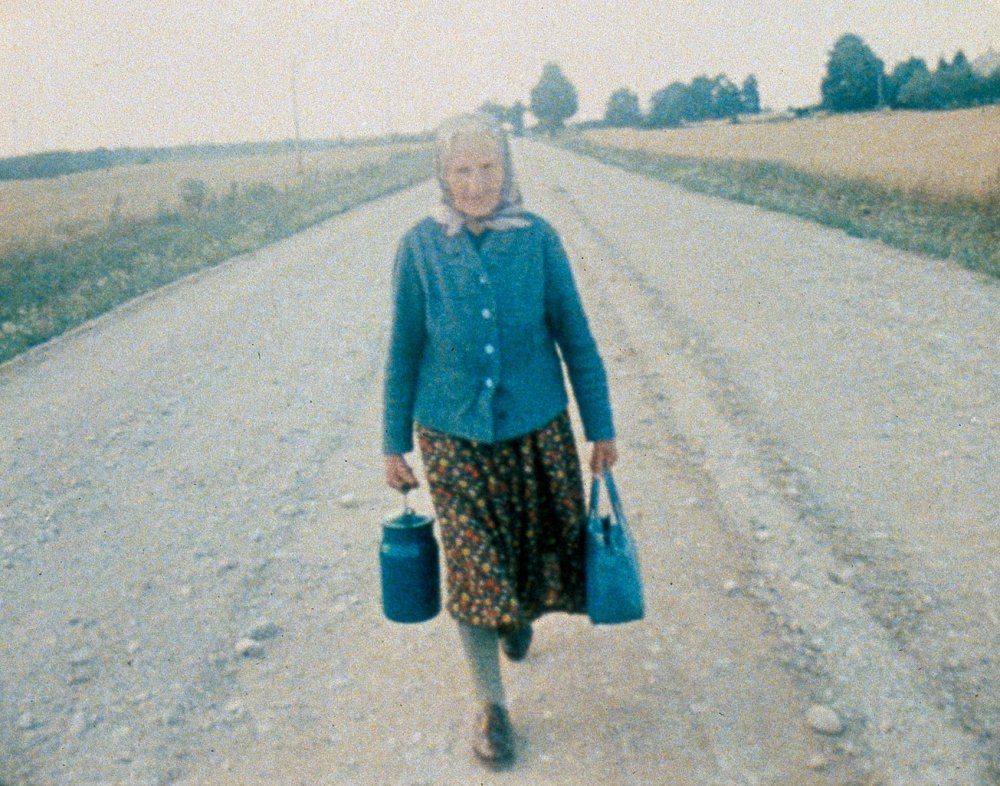
Reminiscences of a Journey to Lithuania (1975)
In Paris, meanwhile, at the Pompidou Centre, Pip Chodorov has coordinated a complete retrospective of Mekas’s films and videos, and what amounts to a catalogue raisonné of Mekas’s moving-image work has been published by Paris Experimental. (“Every single scrap of film or video that has a title is included,” Chodorov claims.) As in the BFI Southbank show, all works produced on film are being projected as film, which of course is the preferred way to view them.
Mekas, however, was one of the first avant-garde filmmakers to make his work available for home viewing, initially as crude VHS transfers. Several years ago Chodorov’s Re:Voir produced an elaborate DVD box-set of Walden, and now it has collaborated with Agnès B. DVD on a set that includes all the films mentioned above except Guns of the Trees. While these are beautifully realised transfers, they are no substitute for the experience of film projection. So seize the opportunity – it may never come again.
Nowhere to go
Born on a farm in Lithuania, Mekas was a published poet before he turned 20 and a wanted man – by the Nazis and later the Soviets, who completed their takeover after the war – for his underground anarchist activities. Forced to flee their homeland in 1944, he and his younger brother Adolfas were captured and sent to a German forced-labour camp. Then followed four years in displaced-persons camps in Germany, where they became fascinated by Hollywood movies and Jonas shot his first images, not with a motion-picture camera but with a variety of still cameras – anything he could get his hands on. These photographs, ephemeral evocations of liminality, have only recently come to light (Mekas is one of history’s most dedicated pack rats) and are on view in the Serpentine exhibition.
An excerpt from Walden (Diaries, Notes, and Sketches) (1969)
UN intervention brought the Mekas brothers to New York in 1949. They could not return to the farm until 1971. “We learned later,” Mekas told me in an interview, “that they had been camped under the trees with guns, waiting for us.” (Hence the title of his bleak 1962 first feature.) I Had Nowhere to Go (1991), Mekas’s written diary from 1944 through 1955, recounts this first decade of exile and his inchoate determination to make a home in a world of words and images. It also makes evident that the diary will be his form, no matter what the medium.
On arriving in New York, the Mekas brothers tried to write films scripts and Jonas bought a 16mm Bolex, using it to document the daily life of the Lithuanian immigrant community (the history of this camera and the ones that followed it is recounted in the lovely video The Story of My Five Bolexes, formerly on the website jonasmekasfilms.com). Drawn to experimental film (he often mentions the profound effect Hans Richter’s Rhythmus 21 had on him), he began to organise screenings in 1953, which led him to found the peripatetic Film-Makers’ Cinematheque, the paramount showcase for avant-garde film until the end of the 1960s.
All About Bolex
In 1955 he started Film Culture magazine, for many years the most serious and provocative film journal in the US, and in 1958 he initiated his enormously influential Movie Journal column in the Village Voice. Some 15 years later, when the Voice dared to edit one of his columns, he decamped for the Soho Weekly News, and when that upstart rag also questioned his ‘personal’ style of journalism, he recommended me to take over his beat – sealing, for better or worse, my fate for the next 35 years and counting.
As if the responsibility of holding screenings, editing a magazine and writing a column (and raising the funds for all of them) weren’t enough, Mekas also co-founded, in 1961, the Film-Makers’ Cooperative, which remains the most active distributor of avant-garde film in the US. And in 1970 he took on what became his heaviest responsibility by co-founding Anthology Film Archives, the premier institution devoted to exhibiting and preserving avant-garde film. So it was astonishing that Mekas also found the time to shape the footage that he shot with seeming casualness – sometimes literally from the hip – into a rich, complex, cinematic autobiography, beginning with Walden and followed by some two dozen 16mm works and many, many more made with the video cameras he has used since the end of the 1980s.
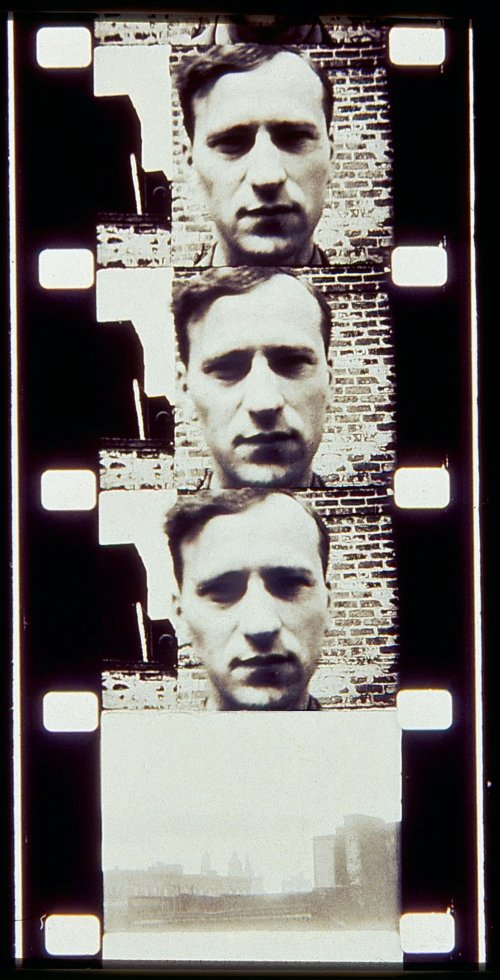
Lost, Lost, Lost (1976)
Mekas’s film poetics sprang in part out of economic necessity. Since film was expensive, he developed a way of shooting in short bursts, sometimes as short as three or four frames (a sixth of a second), before turning off the camera or pointing it elsewhere. Indeed he could have stretched the $45 Barbara Rubin and I spent on ice into several months of handheld 16mm imagery. Although there are moments in even the fastest-paced sequences where the camera holds on a face, an object, a landscape or an interior for a few seconds, one’s impression is of images that are simultaneously present and as elusive as memory; the images are gone before we can fully grasp them.
Like still photographers, Mekas has always attempted to capture the essence of the moment, but for him as a filmmaker, that essence is found in movement – the instantaneous transformation of present into past. That transformation is reinforced by the soundtracks that he constructs at his editing table: first-person associative commentaries mixing remembrances with immediate responses to the images he is viewing and splicing together, and which by definition are all ghosts from the past. (“It’s not narration,” he says of the soundtracks. “It’s just talking.”)
Both mournful and celebratory (their emotive power deriving from the naked yearning and sense of loss that’s there in Mekas’s voice and words even more than in his imagery), the films are intensely personal meditations on recorded memory. They also comprise a cultural history of New York in the second half of the 20th century, from the point of view of an outsider who was attuned to both the underground and the mainstream. When people ask me what New York was like in the 1960s, I tell them to look at Walden, the diaries covering 1965 to 1968. When they ask how the 50s could have morphed into the 60s, I show them Lost Lost Lost. Shot between 1949 and 1963, but not edited until 1975, the film bears witness to American culture in transition from the repression of the Eisenhower years to the euphoric rush of the early 60s. It also evidences the development of Mekas’s style of filmmaking as a response to the changing times (and also to the enormous influence of the films of Stan Brakhage).
Trembling with memory
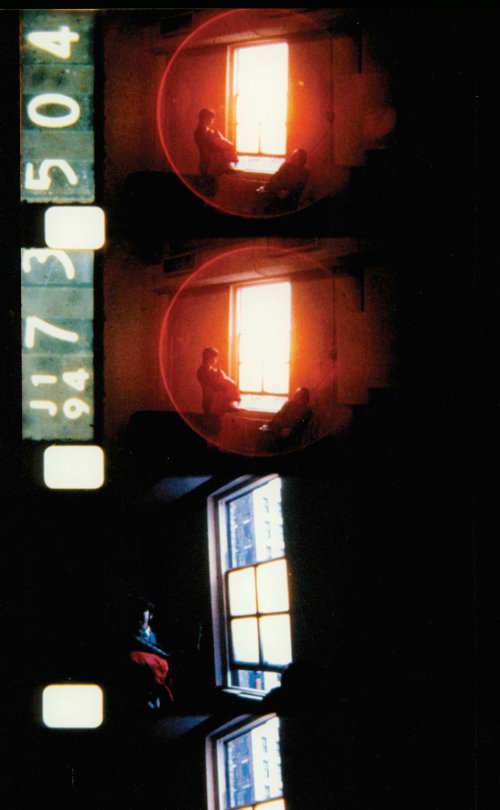
As I Was Moving Ahead Occasionally I Saw Glimpses of Beauty (2000)
Mekas’s last major 16mm film (although who knows what unedited footage he still has on his shelves) is the nearly five-hour As I Was Moving Ahead Occasionally I Saw Brief Glimpses of Beauty (2000). The most intimate and (at least in length) epic of his films, it is almost entirely focused on his domestic life from the mid-1970s to the late 1990s – the period of his marriage to Hollis Melton, which saw the birth of their two children, who by the end of the film have grown into adulthood. Far less abstract than the ‘home movies’ comprising most of Brakhage’s oeuvre, it is also notable for its refusal of sentimentality and for the undertone of melancholy beneath its determinedly optimistic surface. Like all of Mekas’s work, from the giddiest to the most despairing, it is shaped by the displaced person’s desire to recreate a paradise that has faded – as film fades – with time.
At the end of I Had Nowhere to Go, Mekas wrote: “I sat there, by this quiet New England lake, looking across the water, and I almost cried. I saw myself, walking with my mother across the field, my small hand in hers, and the field was burning with red and yellow flowers, and I could feel everything like then and there, every smell and color and the blue of the sky… I was sitting there and trembling with memory.”
Happy 90th birthday, Jonas.
Irrepressible inspiration
Five filmmakers from New York City, Austria, Belgium and the UK share their memories and impressions of Jonas Mekas, his work as filmmaker, distributor and exhibitor – and what it has meant to them.
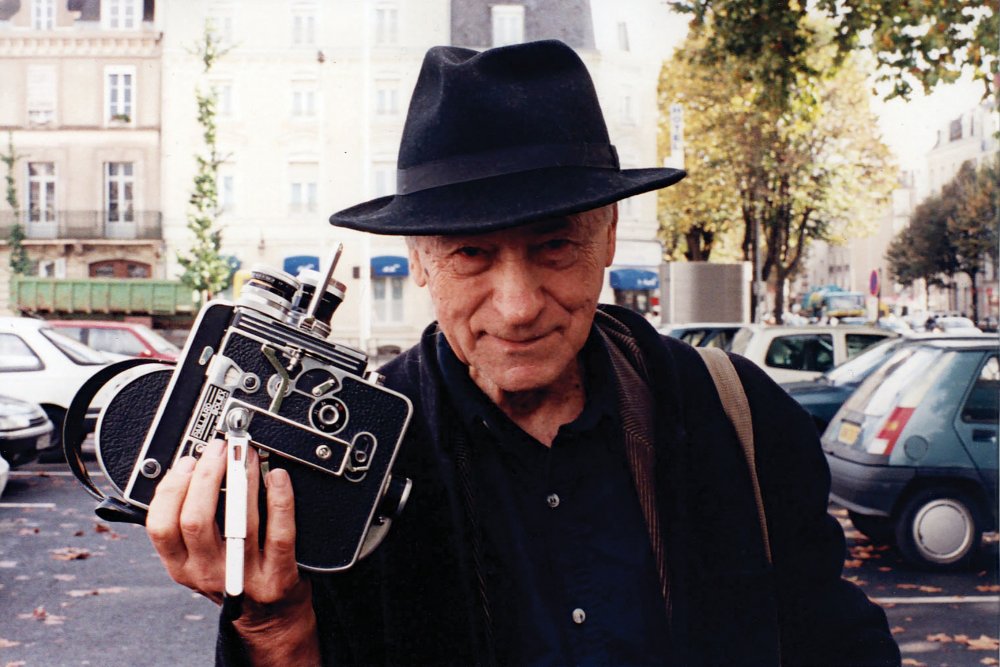
Jonas Mekas with his Bolex camera
Credit: Boris Lehman
Jim Jarmusch
Director, Stranger Than Paradise, Dead Man
Jonas Mekas is an international treasure – but a very difficult man to categorise. He is a remarkable artist and filmmaker, a poet, a cultural anthropologist, preservationist, curator, visual diarist, literary editor, provocateur – and an irrepressible inspiration.
His influence is also impossible to summarise. I’ll just say that for me this man’s work, his mind and his invaluable perspective continue to open up and feed my own. For Jonas, forms are fluid and seemingly interchangeable, yet he approaches each one with a particular kind of wonder and enthusiasm. I can only hope that I might carry, to some small degree, his beautiful influence and love of the process of expression in my own mind, work and perspectives.
Peter Kubelka
Filmmaker and co-founder, Anthology Film Archives
Jonas and I met for the first time in 1963. We lived in opposite corners of the Western world and we both had a very complicated situation vis-à-vis our chosen medium, film. America was practically under the dictatorship of the industry – Hollywood and the unions, who would not tolerate independent cinema (by the way, this word did not exist at the time) – and there was no place for us. I was in Austria. There was a low level of information about cinema.
Between us there was the liberal French nouvelle vague, which both Jonas and I did not like. These people were bought up by producers who would say, “You can make what you want, but make it 90 minutes with a beautiful girl in the lead and music – something we can sell.” We had other things in mind. We wanted to use cinema as a ship like Columbus to go to a country where we had not been before, and we did not care about the Sunday-afternoon families who the films would have to be sold to.
In 1966, with the help of Jonas and Stan Brakhage, I went to America. By then we had both started to show films. I had co-founded the Vienna Film Museum in 1964 and Jonas had already started the Film-Makers’ Cooperative. We both wanted those films which are important to be seen by the public. Between us we showed Leni Riefenstahl, Dovzhenko, Jack Smith… I was called a fascist here in Austria because I showed a fascist film. But I didn’t show it because it was my worldview – I showed it because it is an important film. Jonas showed Jack Smith’s film Flaming Creatures, in New York in 1964] and was arrested for that [on obscenity charges]. He fought for the freedom of expression – the freedom of art.
We were both interested in establishing film as a fully acceptable artform, not as a 19th-century melodrama with a script and actors and background music, as it is still practised by commercial cinema.
I believe in circles in the development of art – multi-renaissances. There’s always a renewal. You could call Jonas a renaissance man with a camera. Dziga Vertov was the man with the 35mm camera; Jonas came along and adopted the 16mm Bolex, a tool which was much lighter and cheaper (but today would be judged a very heavy piece of equipment). It enabled him to work without a script, without a preconceived subject. Jonas had a bag and the Bolex was always inside. And when he felt like it which was several times every day – he took it out and was able to record a part of reality that happened around him in a way which nobody had been able to present before.
Of course, cinema’s smallest element is the single frame, and Jonas used the Bolex’s ability for easily shooting single frames. He used it like an architect uses bricks to build a visual form in time. He discovered what others who tried to imitate 35mm high perfection with the Bolex had not found.
Ken Jacobs
Filmmaker, Tom, Tom, The Piper’s Son
Jonas’s Village Voice column could make us crazy, and yet only he was insisting that this improper personal cinema be attended to – and this during the cine-trough (with precious few exceptions) of the politically intimidated 1950s and early 60s. “Come on, sixties,” he was shouting, like Clark Gable calling Buck in The Call of the Wild. “You can do it!”
His many films are all over the place – self-indulgence is their claim, sometimes with music I can’t stand. Yet what’s the crime? Feeling too much? There are astounding pieces only he would think of making, like the filmed video screens recounting the release of Lithuania from what was supposed to be communism. Offend my sensibilities, Jonas – big deal!
Excerpt from Reminiscences of a Journey to Lithuania (1972)
OK, raw enthusiasm is no virtue in itself, but we’ve found compelling his awful squawking on the horn, his squeezebox ministrations, his singing badly in six languages. Enthusiasts do those things. Film form film form film form! can be a hang-up. Wasn’t the lens open, letting light in – and all those living people? They made it through and onto film, onto videotape, onto a memory card. (Memory card is a sweet name.) The fact is, this fellow knows where he’s been throughout his many days – this very conscious man with his orderly records and endless note-taking, a poet straddling languages with the sense to appeal for money to those who have it.
I still learn from a mind-bending comment he once made: “No one is poor.” This from a person to a person familiar with eating garbage. My partner Flo says he added the words “given language”.
His admirable drinking. I sometimes remember to try loosening up, but you’re either of peasant stock or you’re not, with roots deep into the earth.
He was physically brave after the Flaming Creatures arrests when, in the station house, the police threatened us “commie fags” and he wouldn’t stop telling them what fools they were, their authority visibly sagging. I’d seen the same protective cover form around Jack Smith in the streets when his own otherness put threatening people off. A week later Jonas alone publicly screened Un chant d’amour in order to join our case with that of the famous Jean Genet, this time prepared for jail with Flo’s first roast chicken.
Jonas Mekas recounts smuggling Jean Genet into America
And then he went on to found New York’s Anthology Film Archives, cinema mission house. Whatever his mistakes – like defining a single essential cinema – cinema owes him.
I like his letting his 90 years hang out – the less-than-dainty skin and weathered neck. Yet even now one can see Jonas in his prime come through, the jaunty dude saying “Yes” to the world. “Go on, happen!”
Chantal Akerman
Director, Jeanne Dielman, The Captive
That period when I was in New York, close to the Anthology [Film Archives], gave me an immense sense of freedom and openness. For me it is difficult to talk about Jonas without speaking about the atmosphere, the group who was around him: dancers and painters and theatre people like Richard Foreman. It was a new world, a new way at looking.
I arrived in New York when I was 21. Babette Mangolte introduced me to all these people – it was a revelation and indeed brought me to another space, another kind of viewing art, cinema and so on. Jonas was a kind of centre, not only because he had the Anthology, but by his attitude. I remember coming to show him my first film, Saute ma ville, and how encouraging he was.
Malcolm le Grice
Filmmaker, Castle 1, Berlin Horse
Maybe an organisation for experimental filmmakers would have emerged in London in the late 1960s, but without Jonas Mekas I doubt it would have been a co-op. Though there had been mutual societies from the earliest time of American independence, and even co-operatives during the 1930s recession, creating the Film-Makers’ Cooperative in the anti-socialist USA of the 1960s was truly radical.
If Mekas was not the sole architect of this idea, it was his tremendous commitment and practical drive that set the historical movement in motion, kept it developing and spread its enthusiasm internationally. His lack of self-seeking ego and his understanding of a responsibility to the social were exceptional and crucial. His dedication to open access and lack of censorship, embodied in the constitution of the New York Coop, was adopted as central to the philosophy of the London Film-Makers’ Co-op.
Anthology Film Archives Completion Project by Jonas Mekas
Mekas has always been massively supportive of other film artists both in the USA and abroad, through his writing – particularly in the Village Voice – and a regular NY radio slot. I experienced his in-depth but relaxed style when he interviewed me live on air during my first visit to New York. He promoted work he saw in European festivals in London and elsewhere. His enthusiasm for films has never been bounded by his own work as a supreme diarist and chronicler, recorded through his ever-present camera.
Despite his driving commitment, Mekas is no ideologue – he has a wicked sense of humour. When, in 1977, I had the nerve to confront the urbane, learned and witty film historian P. Adams Sitney in a public debate at New York’s Millennium Film Workshop, Jonas appeared and placed a bottle of Fundador brandy on the small table between us, which we finished to the last drop during the debate. Jonas was wise enough not to take the theoretical substance of our debate too seriously – and did his best to see that we did likewise.
If he has any interest in theory, it is not a theory about film’s form or content but about the social context of film production and viewing – he has fought with tenacity and great generosity to maintain an open, uncensored pluralism. Film history would have been much the poorer without him.
-
Sight & Sound: the January 2013 issue

In this issue: Ang Lee’s 3D spectacular Life of Pi, plus the best films of 2012. In print and digital from 1 December.
-
The Digital Edition and Archive quick link
Log in here to your digital edition and archive subscription, take a look at the packages on offer and buy a subscription.




